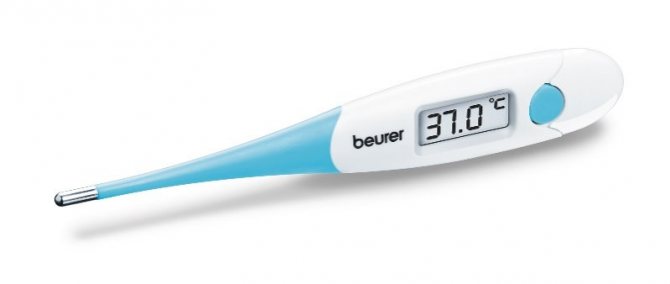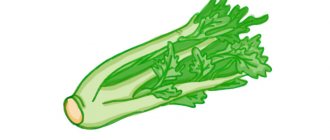Causes of lactation crisis
Situations of decreased lactation and lack of mother's milk during breastfeeding can occur repeatedly during the feeding of the baby.
A decrease in milk production occurs up to four times during the feeding of the baby:
- The first crisis period is observed in the period from the third to the sixth week after the birth of the baby. With the right approach and regular application, the problem disappears after two or three days.
- The wave of crisis occurs at three months, seven and twelve months of the child. A crisis can be triggered by the baby’s growing need for nutrition.
We will consider the causes of development, timing, methods of restoring lactation in more detail.
Lack of milk may not develop in every nursing mother. The mother's body temporarily loses the ability to produce the required amount of milk. The reasons for the lack of breast milk may be improper attachment to the breast, feeding on a schedule, stressful situations, and the mother’s fatigue.
A nursing mother may not attach her baby correctly. The child will not be able to properly latch on to the nipple, will tend to swallow air during feeding, will be malnourished, and will cause injury to the mother.
A child's nutritional needs are individual. The baby's body makes it clear when it needs food. Experts recommend feeding your baby on demand and not focusing on a specific schedule.
A nursing mother must understand the developing crisis. The baby becomes restless, does not let go of the breast for a long time, and feeding becomes more regular. The baby's urination becomes less frequent and he gains weight poorly. Most often, a lack of milk occurs at the age of three months.
Features of a lactation crisis at 3 months
The child has grown up, he is already three months old. It seems that breastfeeding has improved, and the colic has gone away, and the mother has already adapted to the baby - she could live and be happy here. But suddenly, unexpectedly, the child begins to worry at the breast: he cries, twists his legs, throws the nipple. Or, on the contrary, it constantly hangs from the chest, not giving the mother a minute of rest.
The fact is that at this age the child develops an interest in the world around him, and as a result, the nature of his diet changes. The baby stops latching on to the breast while awake, and suckles during naps and at night. This is completely normal, and there is no need to try to force your baby to suckle when he doesn't want to.
But in such a situation, you need to pay attention to the moment the child falls asleep. If he is used to doing this with a pacifier, then it is better to change the pacifier to the breast. Otherwise, the baby may actually stop getting enough nutrition. Moreover, due to the fact that the baby will suck less milk, its quantity may actually decrease.
Combating the milk crisis during breastfeeding
Increasing lactation is a necessary condition for meeting the child's need for nutrients. The breastfeeding crisis can be successfully overcome by observing certain conditions. A systematic approach will allow you to successfully cope with the shortage of milk.
A young mother needs to calmly perceive the problem. External irritants, nervous tension, and stress contribute to the inhibition of milk production. A specialist can prescribe a mild, legal sedative, which will allow you to look at the problem in a new way.
The cause of the problem may be fatigue or lack of sleep. Mommy should sleep at least nine hours a day. It is advisable to temporarily postpone household chores and hand them over to loved ones.
Breast massage, improving blood circulation, helps stimulate increased lactation.
Particular attention should be paid to nutrition and drinking regime. A proper diet, foods rich in protein, beneficial microelements, and drinking plenty of fluids help to improve the lactation process.
Regular breastfeeding helps increase breast milk production. The body strives to produce the necessary amount of nutrition for the full development of the baby. By stimulating the mother's breasts, the baby transmits signals to the mother's body. The child should not be switched to artificial nutrition during this period.
Feeding at night promotes intensive production of a valuable substance. During the night period, the hormonal background is most tuned to the lactation process.
Staying in the fresh air and light physical activity stimulates the process of feeding the baby. A specialist can prescribe vitamin complexes, teas, and compositions that stimulate breast milk production.
Preserving lactation for a long period of time is the task of any mother. This type of nutrition gives the child all the useful substances, promotes full development, ensures the formation of immunity and intelligence. It has been scientifically proven that children who receive natural nutrition are much stronger, develop faster, have a higher level of intelligence, and begin to speak earlier. Artificial nutrition is not able to provide a child with most of the beneficial properties.
How to deal with a lactation crisis
To correct the problem and eliminate the lactation crisis, a nursing woman needs to take a number of measures, all in combination.
Negative emotions have a detrimental effect not only on lactation, but are also transmitted to the baby. Therefore, a caring mother should be nervous, worried and worried as little as possible. A woman’s stable emotional state leads to full lactation and the absence of a crisis. But if the problem already exists, then the correct breastfeeding technique and a favorable emotional background can speed up the process of restoring milk production.
A favorable environment for the development of a lactation crisis can be considered lack of sleep, excessive fatigue and excessive physical activity. A young mother should allocate enough time for sleep - at least 9 hours. If you were unable to sleep well at night, you need to rest with your baby during the day. When a crisis occurs, it is better to delegate most household chores to relatives.
The mother herself should take care of herself and the baby - put her to the breast more often, caress and take care of the newborn.
A nursing woman can influence the level and quality of milk through massage. Light kneading, stroking with the palm of your hand or rubbing the mammary glands can increase blood supply. Breast massage frees the milk ducts, resulting in the outflow of milk faster and in greater quantities. You can supplement the beneficial procedures with a warm shower, cream or oil for the delicate skin of the breast.
A nutritious and balanced diet leads to stable milk production in the mother. Meals should be high-calorie and nutritious, with a high protein content. Drinking plenty of warm drinks will also increase production. Without taking into account the first liquid dish for lunch (soup), a nursing woman should drink at least 1.5 - 2 liters of water, tea, healthy decoctions or fruit drinks per day.
Feeding a baby by the hour is no longer considered correct. Today's recommendations from WHO and most pediatricians boil down to the fact that the child should be fed upon his first request. When a mother puts the baby to the breast, it voluntarily stimulates the mammary glands, which has a positive effect on lactation and leads to an increase in the volume of mother's milk. If the baby is excitable or nervous at the breast, the mother should calm the baby, relax, establish contact with the baby and repeat feeding.
You should not immediately feed your newborn with formula after your baby refuses to breastfeed. A lactation crisis is a temporary and fleeting phenomenon, so a waiting period will be the best method of getting rid of the crisis.
And formula or artificial milk can cause allergies, digestive system disorders, or a protracted version of the development of a lactation crisis.
The female body is designed in such a way that the hormones that are responsible for milk production are most activated at night. Therefore, feeding your baby at night will increase lactation. In addition, the moment of privacy between mother and baby while sleeping together will have a positive effect on both the process of breastfeeding and the nervous system of the newborn.

Every woman after childbirth is recommended to engage in sports or yoga to one degree or another. You can go to the pool, walk more in the fresh air, preferably on foot, and do gymnastic exercises in the morning. For certain medical contraindications, physical activity should be moderate. Otherwise, movement is life and a nursing mother should not forget about it.
How long does a lactation crisis last?
Breastfeeding crises by month occur at different periods of child development. When does a milk crisis happen? Inhibition of the milk production function occurs in the third, seventh and twelfth months of the baby’s life. A lactation crisis, the periods of which coincide with a new wave of baby development, does not occur in every woman. The timing and methods of control depend on the causes of the problem. The period of suppressed lactation can be observed for several days or weeks. The correct attitude of the mother, an integrated approach to solving the problem, the attitude, allows you to successfully overcome the problem.
Many mothers make mistakes, as a result of which the function of producing natural nutrition can be completely lost. It is not recommended to replace food with artificial formulas at this time. The support of loved ones during this difficult period will be of particular importance. A nursing mother must be given the opportunity to fully rest, get enough sleep, and put all problems aside for a while.
The need for a calm attitude towards the current situation will be an additional advantage. The speed of restoration of nutrition production largely depends on the regularity of the baby's feeding. Physical contact with the mother at this time is also important for the baby.
An integrated approach will solve the problem in the shortest possible time.

Stages of breastfeeding
How the lactation crisis manifests itself, the periods and timing of its occurrence directly depends on the stage of breastfeeding.
The stages of breastfeeding are characterized by unequal composition and quantity of milk, and therefore different manifestations of disorders. The concept of “lactation” implies the physiological process of production and accumulation of nutrient fluid in the mammary glands, as well as the release of milk from the nipples. The breast begins to prepare for the period of feeding the baby from the first days of pregnancy. Already from the fourth month of carrying a baby, many expectant mothers begin to notice that droplets of thick liquid - colostrum - protrude from the nipples. This is exactly what a newborn should receive in the first hours after birth.

Breast milk is the best nutrition for a baby in the first year of life
After childbirth, a serious restructuring occurs in the female body: the main task is no longer to bear the fetus, but to feed the baby. After the placenta is born, there is a surge of two main hormones responsible for lactation: oxytocin, which is responsible for the movement of nutrient fluid through the ducts and its excretion, and prolactin, due to which milk is formed in the breast. Doctors distinguish several stages of breastfeeding.
Lactation is divided into several parts, which differ from each other by changes in the composition of natural food and the structure of the mammary gland.
- First stage.
The first feeding usually occurs within an hour after birth, which is how colostrum begins to be produced. The latter contains less carbohydrates and fats than milk. However, the content of antibodies, proteins and vitamins is high.
Little colostrum is produced, and many are worried about this, mistaking it for a crisis. Maternity hospital workers often bottle-feed formula to newborns.

This is wrong, although there is little colostrum, it is enough to saturate the body with the necessary elements. In addition, the baby does not yet need large quantities of food.
- Replacement with milk.
With this transition, the mammary gland enlarges, hardens, and milk flow occurs. Initially there is too much of it, but after agreement with the needs of the baby, the amount of food is established.
There is no milk left after feeding, but it forms again the next time you meet the baby.
- Mature lactation.
Occurs after 3–6 weeks of feeding. Milk flows steadily when sucking, the baby independently regulates the amount. The breasts are soft and there is no need to pump.
Despite the relative stability, it was during this period that the crisis began. The duration varies from person to person, usually 2–7 days.

The lactation crisis affects certain periods of breastfeeding. The first usually occurs at 3–6 weeks, then at 3 and 6 months. This is exactly how much time the mammary glands need to adapt to increasing demands.
- Involution of lactation.
This is the end of natural feeding, during which breast size and milk quantity decrease, and the composition changes. Weaning from breastfeeding during this period will not cause any particular inconvenience to the mother and child.
Yesterday the baby was happy and full. Today his mood is spoiled by a feeling of hunger. Anyone in his place would have become indignant. Anyone in his mother's place would have become worried and thought about introducing supplementary feeding.
Action plan during lactic crisis:
- Feed often. Apply at the child's first request. Let it hang on your chest. Let your baby nurse as long as he wants.
- Feed in a circle. Those. after applying to the right breast, apply to the left and so on.
- Organize co-sleeping and additional nighttime feedings.
- Help your baby suck out milk. In the event of mature lactation, the mammary gland will no longer be constantly filled with milk. A child is unlikely to like an empty breast out of habit; he will spit it out. The mother's task is to teach the baby to suck milk. You can express a couple of drops of milk directly into your baby's mouth, stroke the breast while feeding, or use the Breast Compression Method. We described the technique of this technique in this article.
- Drink more warm liquids. Drinking plenty of warm water does not increase the amount of milk, but it perfectly stimulates its outflow from the milk ducts.
- Keep calm. And this is not simple advice in the “Calm down!” format. The thing is that the stress hormone adrenaline blocks the production of oxytocin. As a result, it is more difficult for milk to come out of the breast and the problem gets worse.
The uniqueness of breast milk also lies in the fact that its composition changes depending on the growing up of the child and changes in his needs for nutrients and vitamins as he grows. The body of a nursing mother produces only the kind of milk that is suitable for her baby. Let's look at the main stages of breastfeeding.
Checking lactation intensity
The amount of breast milk can be measured in several ways. During normal lactation, the temperature of the mammary gland is higher than body temperature. The difference varies and is one degree Celsius. Another method is based on weighing the child. The baby is weighed before feeding. After weighing, the baby is fed. The weighing procedure is repeated after feeding. The method allows you to measure the amount of food consumed and the volume of its production.
The correct approach to solving the problem will allow you to effectively overcome the wave of crisis, preserve the natural function of nutrition, and give the child a strong immune system and a lot of essential substances.
Method for checking the intensity of lactation

It's called Moll's method. Temperatures under the mammary gland and in the armpit are compared. If the lactation process is quite intense, then the temperature under the breasts will be higher by about 0.5-1 degrees.
A lactation crisis is not a tragedy. It is completely surmountable with proper organization of breastfeeding.

The benefits of breast milk are widely known. No artificial mixture can provide a child with so many valuable substances that are indispensable for the full development of the body. A milk crisis during breastfeeding can occur even with an established breastfeeding system. Let's consider the reasons for development and ways to overcome the problem.
How to overcome the milk crisis: what to do
Psychological methods
The main rule is not to worry. Remember that if the baby’s health is fine, everything is fine. Sufficient lactation is progressing.
Milk crises during breastfeeding are short-lived phenomena. And the deficiency will stimulate increased sucking, therefore, there will be good milk production. Do not forget that the mother’s anxious state can affect the child and aggravate the problem.
Maintaining a daily routine and improving the life of a nursing mother
Milk crises are a consequence of an irrational or incorrect regimen for a nursing mother. Frequent lack of sleep, fatigue, worries and bad mood are a direct consequence of the crisis.
- focus on the correct daily routine for yourself and your baby;
- regular good sleep. It is advisable to put everything aside and sleep a little while the baby sleeps;
- if possible, involve loved ones in helping with housework;
- put the baby to the breast as soon as required. The more the baby eats, the more milk will be produced.
Sometimes, for psychological satisfaction and to lift your spirits, you need to arrange an interesting walk or meeting.
Massage
To calm the nervous system and stimulate blood circulation, a course of massage is recommended, as a result of which lactation also increases. Exercises in the chest and neck area are recommended. Even light massaging strokes are enough to smooth out the symptoms of the milk crisis during breastfeeding.
Warm baths
Warm treatments help some. They are recommended for pronounced deficiencies.
Warm, relaxing baths will improve blood circulation and promote lactation.
You can also practice a warm wrap: wrap your breasts in a warm towel before feeding.
Nutrition
A very important factor in a mother’s regimen during a milk crisis during breastfeeding in order to stimulate lactation is proper, balanced nutrition and plenty of drinking. Meals should be varied, high in calories, contain a lot of protein and at least five times a day. Since the baby may often wake up for night feedings, it is advisable to drink more nutritional fluid at night. This could be tea with milk, compotes.
But the choice of food products should be approached carefully so as not to cause an allergic reaction in the child. There are natural lactation stimulants: carrot juice with milk or cream, anise seed decoction, anise, fennel and oregano tea, caraway seed decoction.
Increased number of applications
Putting the baby to the breast as needed is the first rule for stimulating lactation. It is even recommended to give to both breasts, but to apply to the second only when the first is completely empty. You should not resort to mixtures. The crisis is short-lived, and the child will become accustomed to formula.
There are cases that children even refuse to breastfeed. It's easier to suck on a bottle than to breastfeed. The baby will be full longer, require breastfeeding less often - lactation will decrease. Therefore, complementary feeding can aggravate the problem of lactation.
Night feedings
Night feeding is a period of intense production of the hormones prolactin and oxytocin, which directly stimulate lactation. In the morning, every mother knows the feeling of a full breast. A good result is achieved by sleeping together and feeding the child frequently at night. It is night application that helps solve the problem without drug intervention.











